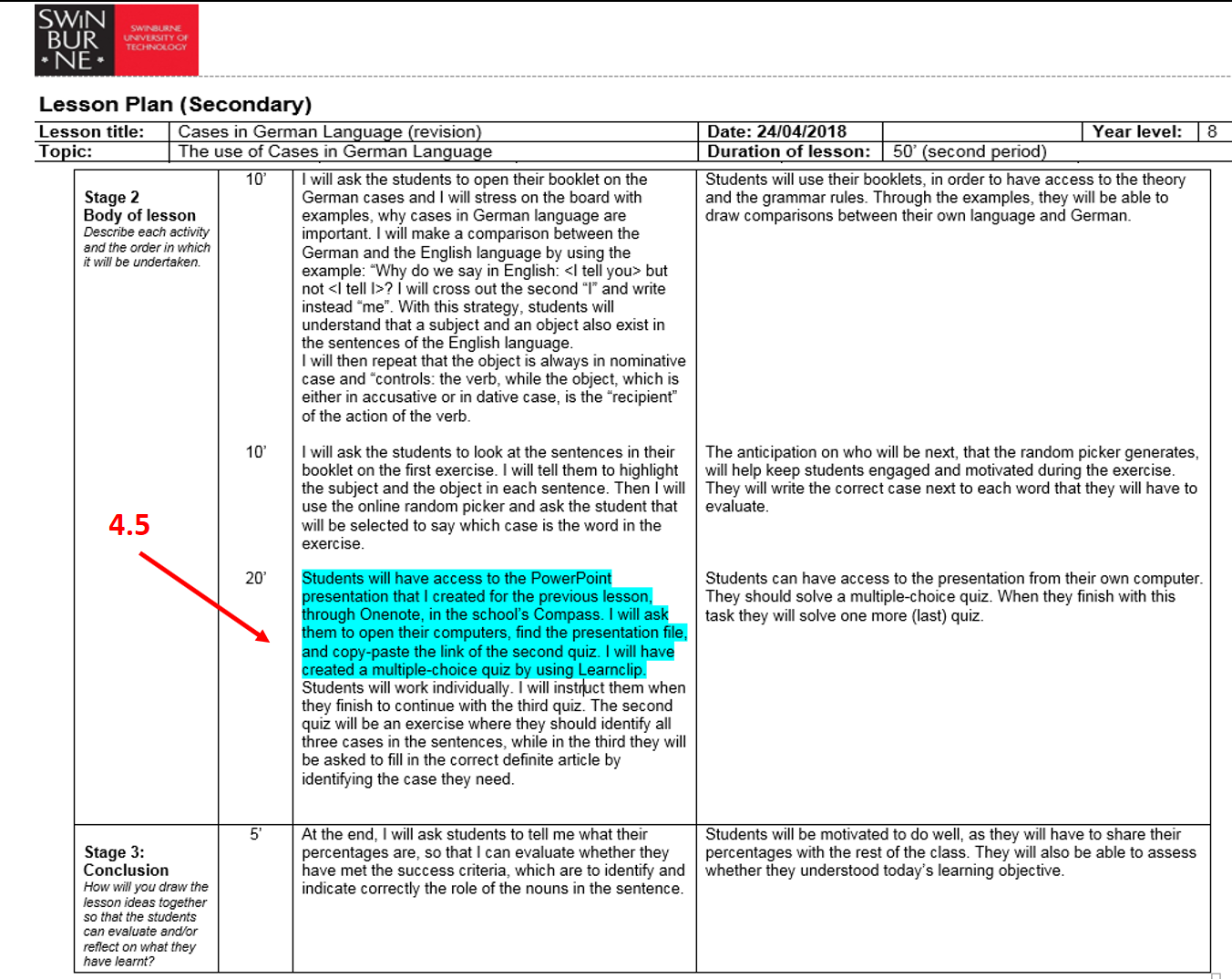Know the content and how to teach it
AITSL Standards 2.6, 3.4 & 4.5
Focus Areas
- Is willing to communicate digitally
- Uses ICT to promote engagement and understanding
- Uses ICT in resource development and planning
- Uses diverse resources specific to content/concepts
- Provides props, visual aids, cues to support understanding for students with a wide range of levels of prior knowledge and understanding
- Demonstrates within planning, a broad range of issues/strategies for safe/ethical/responsible use (e.g., inappropriate site/content/language)
Description
While planning my lesson sequences, I realised that clarity on the lesson’s objectives and expected outcomes greatly facilitates putting together the suitable resources that can help students fulfill the success criteria and reach the desired level of understanding. Hence, all my classes featured additional ICT material such as online quizzes, Kahoot games, PowerPoint presentations, educational videos, 3rd-party booklets, crossword puzzles, custom exercises and maps (Slider 2.2). Schacter & Fagnano (1999) make the point that effective application of technology promotes student learning and achievement, while also encouraging collaboration and the enhancement of heir critical thinking and problem-solving skills. My experience with ICT-based material corroborated this viewpoint. To ensure safety and comply with school’s ICT policy, I made sure that any shared content was posted on the school’s approved systems for that purpose (e.g., shared OneNote page.) (Picture 2.2).
References
Schacter, J., Fagnano, C. (1999). Does Computer Technology Improve Student Learning and Achievement? How, When, and under What Conditions? Journal of Educational Computing Research, 20(4), 329-343.
Evidence Artefacts
Slider 2.2: Examples of ICT that I incorporated in my classes (Image 1: Flipquiz, Image 2: Kahoots, Image 3: Quizizz).



